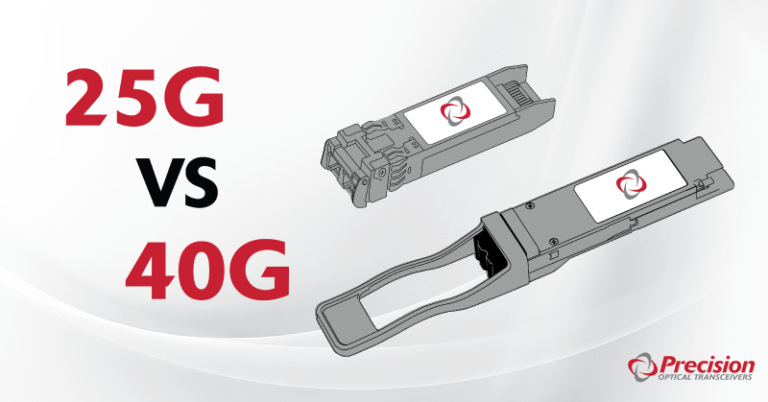
The Path to Next Generation Ethernet: 25G or 40G?

The path to the next generation of network configuration has lately manifested itself not as a straight line, but as a wavy journey sensitive to debate over competing strategies for moving forward.
In one camp, there is the original plan to transition from 10 G to 40 G Ethernet. The 40 G standard is constructed from four parallel 10 Gb/s data streams linked through a quad small form factor pluggable (QSFP+) transceiver; depending on distance, either SR4 (four-lane short range) or LR4 (four-lane long range) specifications can be deployed. Generally speaking, SR4 finds use connecting switches within a data center, while LR4 is commonly used to make connections between data center sites. Connections can be made with copper via direct attach cable (DAC), or with fiber via active optical cable (AOC).
This 4 x 10 Gb/s approach already has been followed by many large data centers, yet it imposes a limitation on achieving the common next-generation networking goal of 100 G. Ten parallel 10 Gb/s data streams are needed to construct a 100 G path, which necessitates a 10-lane receiver transceiver with a large and unwieldy form factor.
An alternative approach makes use of the more recently developed QFSP28 transceiver, which offers a single-lane 25 G interface. Four 25 Gb/s data streams can be used to produce a 100 G path over copper or fiber cable within a compact form factor that is less expensive to produce. This approach also offers higher port density, saves on energy consumption and requires fewer top-of-rack (ToR) switches and cables.
Despite these advantages, however, the 25 G approach is not necessarily the best approach across the board. Factors such as backward switch compatibility, connection options and cable length requirements need to be taken into account. In terms of compatibility, 40 G has a longer history of development, which means a wider range of products on the market; in terms of connection options, switch-to-switch for 25 G has taken the lead in coming to market over switch-to-server. And although 40 G DAC is more expensive than 25 G DAC, cable lengths of three or more meters require forward error correction (FEC) for 25 G — a factor that will introduce greater latency into the system.
Still, a survey of some of the available literature regarding the 25 G versus 40 G debate seems to point generally, if cautiously, in the 25 G direction. Individual network needs, of course, will vary. For a consultation on building a custom solution, contact our experts.






